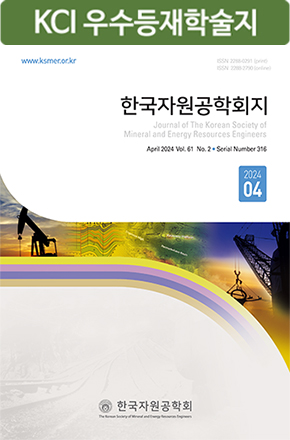Review
- Al-Dossary, S. and Marfurt, K.J., 2006, “3-D volumetric multispectral estimates of reflector curvature and rotation,” Geophysics, Vol. 71, pp. 41-51.
- Bahorich, M.S. and Farmer, S.L., 1995, “3-D seismic coherency for faults and stratigraphic features,” The Leading Edge, Vol. 14, pp. 1053-1058.
- Blumentritt, C., Marfurt, K.J. and Sullivan, E.C., 2006, “Volume-based curvature computations illuminate fracture orientations, Lower-Mid Paleozoic, Central Basin Platform, West Texas,” Geophysics, Vol. 71, pp. B159-B166.
- Britt, L.K. and Schoeffler, J., 2009, “The geomechanics of a shale play: What makes a shale prospective!,” SPE 125525 presented at the SPE Eastern Regional Meeting, Charleston, West Virginia, USA, September 23-25.
- Cary, P., 2001, “Multicomponent seismic exploration in Canada – one person’s perspective,” CSEG Recorder (September), Vol. 26, pp. 62-67.
- Chopra, S. and Marfurt, K.J., 2007a, “Seismic Attributes for Prospect Identification and Reservoir Characterization,” Society of Exploration Geophysicists, Tulsa, OK, p. 456.
- Chopra, S. and Marfurt, K.J., 2007b, “Seismic attributes for fault/fracture characterization,” presented at 2007 CSPG CSEG Convention, Calgary, Canada, May 14-16.
- Chopra, S. and Marfurt, K.J., 2007c, “Curvature attribute applications to 3D surface seismic data,” The Leading Edge, Vol. 26, pp. 404-414.
- Chopra, S., Alexeev, V. and Xu, Y., 2003, “3D AVO crossplotting – An effective visualization technique,” The Leading Edge, Vol. 22, pp. 1078-1089.
- Close, D., Stirling, S., Cho, D. and Horn, F., 2010, “Tight gas geophysics: AVO inversion for reservoir characterization,” CSEG Recorder (May), Vol. 35, pp. 28-35.
- Craft, K.L., Mallick, S., Meister, L.J. and Van Dok, R., 1997. “Azimuthal anisotropy analysis from P-wave seismic traveltime data,” Annual Meeting, Society of Exploration Geophysicists, Expanded Abstracts, Vol. 18, pp. 1214-1217.
- Downton, J., Roure, B. and Lee, H., 2011, “Azimuthal Fourier coefficients,” CSEG Recorder (December), Vol. 36, pp. 22-36.
- Dufour, J., Squires, J., Goodway, W.N., Edmunds, A. and Shook, I., 2002, “Integrated geological and geophysical interpretation case study, and Lamé rock parameter extractions using AVO analysis on the Blackfoot 3C–3D seismic data, southern Alberta, Canada,” Geophysics, Vol. 67, pp. 27-37.
- EERL (Earthworks Environment and Resources, Ltd), 2006, Understanding Stochastic Seismic Inversion, Earthworks Technical Note, p. 27.
- Gaiser, J.E., 2003, “Reservoir cracks tell many tales,” AAPG Explorer (April), pp. 26-27.
- Godfrey, R. and Bachrach, R., 2008, “Seismically guided fracture characterization,” CSEG Recorder (March), Vol. 33, pp. 30-36.
- Goodway, W., Chen, T. and Downton, J., 1997, “Improved AVO fluid detection and lithology discrimination using Lamé petrophysical parameters; “Lambda-Rho”, “Mu-Rho”, & “Lambda/Mu fluid stack”, from P and S inversions,” Annual Meeting, Society of Exploration Geophysicists, Expanded Abstracts, Vol. 16, pp. 183-186.
- Gray, D., 2007, “Observations of azimuthal anisotropy in prestack seismic data,” presented at 2007 CSPG CSEG Convention, Calgary, Canada, May 14-16.
- Gray, D., 2008, “Fracture detection using 3D seismic azimuthal AVO,” CSEG Recorder (March), Vol. 33, pp. 40-49.
- Gray, D., Anderson, P., Logel, J., Delbecq, F. and Schmidt, D., 2010, “Principal stress estimation in shale plays using 3D seismic,” presented at GeoCanada 2010, Calgary, Canada, May 10-14.
- Gray, D., Anderson, P., Logel, J., Delbecq, F., Schmidt, D. and Schmid, R., 2012, “Estimation of stress and geomechanical properties using 3D seismic data,” First Break, Vol. 30, pp. 61-68.
- Guo, Y. and Marfurt, K.J., 2011, “Seismic attribute analysis of fractures in Woodford Shale,” EAGE Conference & Exhibition, Vienna, Austria, May 23-26.
- Guo, Y., Zhang, K. and Marfurt, K.J., 2010, “Seismic attribute illumination of Woodford Shale faults and fractures, Arkoma Basin, OK,” Annual Meeting, Society of Exploration Geophysicists, Expanded Abstracts, Vol. 29, pp. 1372-1376.
- Hampson-Russell, 2007, Strata Guide Tutorial, CGGVeritas, p. 44.
- Hardage, B.A., 2011a, “S waves prove their worth with fractures,” AAPG Explorer (April), pp. 46.
- Hardage, B.A., 2011b, “Turn, turn, turn: Rotating for S-wave data,” AAPG Explorer (May), pp. 30-31.
- Hardage, B.A., 2011c, ”S-waves on crack? Not so much,” AAPG Explorer (June), pp. 32-33.
- Hardage, B.A., DeAngelo, M.V., Murray, P.E. and Sava, D., 2011, Multicomponent Seismic Technology, Society of Exploration Geophysicists, Geophysical References Series 18, p. 318.
- Hwang, S. and Jin, G., 2012, “Unconventional reservoirs: Review on geophysical well logging for shale plays,” The Journal of Korean Society for Geosystem Engineering, Vol. 49, pp. 248-260.
- Iverson, W.P., 1995, “Closure stress calculations in anisotropic formation,” SPE 29598 presented at Low Permeability Reservoirs Symposium, Denver, Colorado, March 19-22.
- Kendall, R., 2006, “Advances in land multicomponent seismic: Acquisition, processing and interpretation,” CSEG Recorder, 2006 Special Edition, pp. 65-75.
- Lees, J.A., 1999, “Constructing faults from seed picks by voxel tracking,” The Leading Edge, Vol. 18, pp. 338-340.
- Lewis, R., Ingraham, D. and Pearcy, M., 2004, “New evaluation techniques for gas shale reservoirs,” Schlumberger Reservoir Symposium 2004 (http://www.sipeshouston.org/presentations/Pickens%20Shale%20Gas.pdf.
- Li, X.-Y., 1999, “Fracture detection using azimuthal variation of P-wave moveout from orthogonal seismic survey lines,” Geophysics, Vol. 64, pp. 1193-1201.
- Lisle, R.J., 1994, “Detection of zones of abnormal strains in structures using Gaussian curvature analysis,” AAPG Bulletin, Vol. 78, pp. 1811-1819.
- Løseth, H., Wensaas, L., Gading, M., Duffaut, K. and Springer, M., 2011, “Can hydrocarbon source rocks be identified on seismic data?,” Geology, Vol. 32, pp. 1167-1170.
- Lynn, H.B., 2004, “The winds of change: Anisotropic rocks-their preferred direction of fluid flow and their associated seismic signatures-Part 1,” The Leading Edge, Vol. 23, pp. 1156-1162.
- Lynn, H.B., Simon, K.M., Bates, C. and Van Dok, R., 1996, “Azimuthal anisotropy in P-wave (multiazimuth) data,” The Leading Edge, Vol. 15, pp. 923-928.
- Mallick, S., Craft, K., Meister, M. and Chambers, R., 1996, “Computation of principal directions of azimuthal anisotropy from P-wave seismic data,” Annual Meeting, Society of Exploration Geophysicists, Expanded Abstracts, Vol. 17, pp. 1862- 1865.
- Pendrel, J., 2006, “Seismic inversion-A critical tool in reservoir characterization,” Scandinavian Oil-Gas Magazine, No. 5/6, pp. 19-22.
- Refunjol, X.E., Marfurt, K.J. and Le Calvez, J.H., 2011, “Inversion and attribute-assisted hydraulically induced microseismic fracture characterization in the North Texas Barnett Shale,” The Leading Edge, Vol. 30, pp. 292-299.
- Rickman, R., Mullen, M., Petre, E., Grieser, B. and Kundert, D., 2009, “Petrophysics key in stimulating shales,” The American Oil & Gas Reporter http://www.halliburton.com/public/solutions/contents/Shale/related_docs/0309%20 Halliburton%20Eprint.pdf.
- Rüger, A. 2002, “Reflection Coefficients and Azimuthal AVO Analysis in Anisotropic Media,” Society of Exploration Geophysicists, Geophysical Monograph Series 10, p. 189.
- Rüger, A., 1998, “Variation of P-wave reflectivity with offset and azimuth in anisotropic media,” Geophysics, Vol. 63, pp. 935-947.
- Rutledge, J.T. and Phillips, W.S., 2003, “Hydraulic stimulation of natural fractures as revealed by induced microearthquakes, Carthage Cotton Valley gas field, east Texas,” Geophysics, Vol. 63, pp. 441-452.
- Schmid, R. and Schmidt, D., 2011, “Seismic derived geomechanical properties for shale gas exploitation,” presented at the 2011 CSPG CSEG CWLS Convention, Calgary, Canada, May 9-13.
- Schoenberg, M. and Sayers, C.M., 1995, “Seismic anisotropy of fractured rock,” Geophysics, Vol. 60, pp. 204-211.
- Schoenberg, M., 1980, “Elastic wave behavior across linear slip interfaces,” Journal of Acoustical Society of America, Vol. 68, pp. 1516-1521.
- Sondergeld, C.H., Newsham, K.E., Comisky, J.T., Rice, M.C. and Rai, C.S., 2010, “Petrophysical considerations in evaluating and producing shale gas resources,” SPE 131768 presented at SPE Unconventional Gas Conference, Pittsburg, Pennsylvania, USA, February 23-25.
- Taner, M.T., 2001, “Seismic attributes,” CSEG Recorder (September), Vol. 26, pp. 48-56.
- Thomsen, L., 1986, “Weak elastic anisotropy,” Geophysics, Vol. 51, pp. 1954-1966.
- Thomsen, L., 1988, “Reflection seismology over azimuthally anisotropic media,” Geophysics, Vol. 53, pp. 304-313.
- Treadgold, G., Sicking, C., Sublette, V. and Hoover, G., 2008, “Azimuthal processing for fracture prediction and image improvement,” CSEG Recorder (May), Vol. 34, pp. 38-41.
- Tsvankin, I., 1997, “Reflection moveout and parameter estimation for horizontal transverse isotropy,” Geophysics, Vol. 62, pp. 614-629.
- van Bemmel, P. and Pepper, R.E.F., 2000, “Seismic signal processing method and apparatus for generating a cube of variance values,” US Patent Number 6,151,555,2000.
- Varela, I., Maultzsch, S., Chapman, M. and Li, X.-Y., 2009, “Fracture density inversion from a physical geological model using azimuthal AVO with optimal basis functions,” Annual Meeting, Society of Exploration Geophysicists, Expanded Abstracts, Vol. 28, pp. 2075-2079.
- Wang, J., Zheng, Y. and Perz, M., 2007, “VVAZ vs. AVAZ: practical implementation and comparison of two fracture detection methods,” Annual Meeting, Society of Exploration Geophysicists, Expanded Abstracts, Vol. 26, pp. 189-183.
- Wild, P., 2011, “Practical applications of seismic anisotropy,” First Break, Vol. 29, pp. 117-124.
- Williams, M. and Jenner, E., 2002, “Interpreting seismic data in the presence of azimuthal anisotropy; or azimuthal anisotropy in the presence of the seismic interpretation,” First Break, Vol. 20, pp. 771-774.
- Xu, S. and King, M.S., 1989, “Shear-wave birefringence and directional permeability in fractured rock,” Scientific Drilling, Vol.1, pp. 27-33.
- Xu, X. and Tsvankin, I., 2006, “Azimuthal AVO analysis with anisotropic spreading correction: A synthetic study,” The Leading Edge, Vol. 25, pp. 1336-1342.
- Xu, X. and Tsvankin, I., 2007, “A case study of azimuthal AVO analysis with anisotropic spreading correction,” The Leading Edge, Vol .26, pp. 1552-1561.
- Zheng, Y., 2006, Seismic Azimuthal Anisotropy and Fracture Analysis from PP Reflection Data, unpublished PhD dissertation, University of Calgary, p. 110.
- Publisher :The Korean Society of Mineral and Energy Resources Engineers
- Publisher(Ko) :한국자원공학회
- Journal Title :Journal of the Korean Society of Mineral and Energy Resources Engineers
- Journal Title(Ko) :한국자원공학회지
- Volume : 50
- No :1
- Pages :156-169
- DOI :https://doi.org/10.12972/ksmer.2013.50.1.156



 Journal of the Korean Society of Mineral and Energy Resources Engineers
Journal of the Korean Society of Mineral and Energy Resources Engineers








